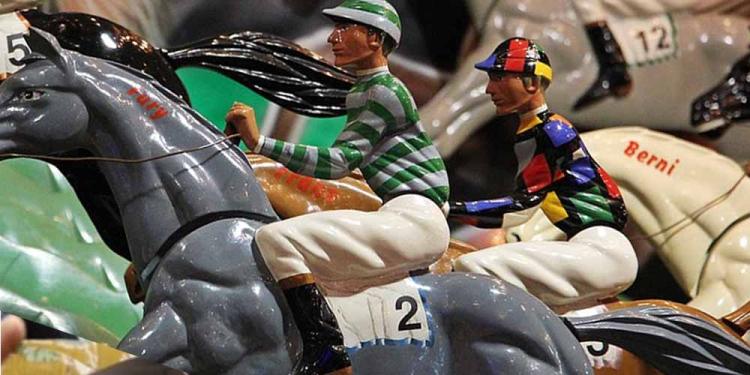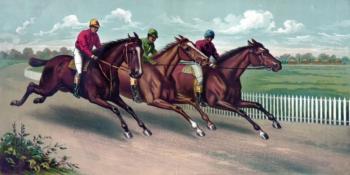Alan Woods And Horse Racing – Winning Hundreds Of Millions Of Dollars
Posted: September 16, 2022
Updated: September 16, 2022
-
Who is this genius guy?
-
The formula that changed his life!
-
Check out our article about Alan Woods and horse racing!

What do you think, is 10 million dollars a lot of money? How about earning it daily and from nothing else but sports betting? You would probably think it impossible, but there is a man who did it! Alan Woods became the world’s best horse racing bettor with the help of a computer program and acquired a fortune of 670 million dollars in 25 years. In this article, we will discover his genius method and how Alan Woods and horse racing met!
Alan Woods and horse racing
His exceptional mathematical abilities already showed when he was only a child, so it’s not surprising that he got a degree in mathematics and worked as a statistician. His job was to calculate, for instance, how long a person would live if he did no exercise and smoked two packs of cigarettes a day. He bet on a horse race in college for the first time, but with hardly any success. Here is a horse racing betting guide for you!
After college, Alan Woods and horse racing went separate ways until his thirties. He read a book about blackjack card counting strategies and decided to become a pro gambler. For three years, he went to every casino in the world he could, undercover. After getting tired of risking everything with card counting, he headed to Hong Kong with two friends and got a team of programmers that made history by winning hundreds of millions of dollars!
How to become a successful horse race bettor
For anyone hoping there is a secret recipe for winning millions of dollars in horse racing, we have some good news and some bad news. Here’s the bad news, according to Alan Woods. You can ask, but you won’t necessarily get an answer that will be useful to you or anyone else. Imagine asking a meteorologist how to calculate what the weather will be like. They couldn’t say it in a way that would be understandable to the average person.
However, the good news is that the basic ideas are relatively simple. Alan and his team won on tips that average bettors would consider bad bets. The bad news is that the key to this is that they had more information than the average betting public. Much more. Woods’ team employed a dozen people to review, analyze and collect data on every horse that entered a race in Hong Kong, according to online sportsbook news in Hong Kong. Then, they put the data into the computer program, which calculated the value of each horse by using a formula based on previous results.
Alan Woods and horse racing
Putting together this formula is a tough nut to crack! It’s mathematically composed of the factors that decide the races, according to Alan and his team. Some factors, like the horse’s gender, the track, the distance, the weight, and the most recent results, are objective and easily obtainable. The key here is to properly evaluate these pieces of information. For example, Woods and his partner at the time, Bill Benter, figured out how many races a horse had competed in was more significant than how old it was.
The data certainly backs this up! The more times a horse has to participate in a race, the less and less it will like it. Then there are the results. Finishing second of eight isn’t as impressive as being fourth of 14. However, seemingly small things can mess up the formula. Woods said back then that in 1995, the computer model didn’t work for a month or two in the case of one track.
They eventually realized that it was because they had changed the curve of the track, so the horses running on that track were at a disadvantage. After the team adjusted the coefficient related to the starting positions of the track, they immediately started having a winning streak again. Other factors are more subjective, so Alan employed expert analysts to observe each horse at each race.

Alan woods and horse racing factors
According to online sportsbook news in Hong Kong, they had a factor they considered bad riding and another they called lack of trying. They examined the early speed ratio if the horse went too fast or too soon. As well as the late speed ratio if they start pretty late. These are things that any seasoned bettor is likely to observe. What plus the computer team did was systematize the process, eliminate superstition and minimize the possibility of error.
They were looking for what they called an overlay. An overlay is any horse that receives considerably fewer bets and, therefore, whose odds are high. On the other hand, an underlay is a horse that is a fan favorite, whose odds are low compared to their chances. When Woods analyzed a tournament, he always looked for overlays. It’s not that these always win, but for long-term players, these are valuable bets. Luckily for Woods, there’s usually at least one overlay horse in every race.
The form guide contains four significant columns. The horse’s number, its current odds at Bet Online Sportsbook, for example, its probability of winning according to the computer calculation, and a number that Alan Woods referred to as the expected value of winning. The latter was calculated by multiplying the horse’s computer-calculated probability of winning by its current odds. Thereby determining how much they could win with each bet.
The formula
The formula looks like this: E (return) = P (win) x current odds. If the expected value of winning is bigger than one, then the horse is an overlay, a potentially profitable horse. However, if it is less than one, the horse is an underlay and should be avoided. If the expected value of winning is between 0.82 and 1, the horse is a small underlay but still not worth the investment. For example, if a horse is calculated to have a probability of 0.25 to win, which pays $2, the expected value of winning is 0.50, 0.25 x 2.
That doesn’t mean he won’t win. It just means that they are overbetting in the market. In the long run, if a team consistently bets on horses with such a low expected winning value, it will be statistically unprofitable. The usual tips that casual bettors prefer are rarely the overlays. Simply because if someone tells you about it, they probably know it from others, so there will be too many bets on the same horse. In an interview, Woods recalled an incident when he got tips on four different horses for a race in three various clubs on a night out.
Of course, the other guests also heard these tips, so these four horses became the underlay. Alan’s computer shifted the odds towards the other three. When the race was over, the three horses selected by the computer finished in the top three places. You could say that their whole horse racing theory is actually based on doing the opposite of what the general public does. They made hundreds of millions this way, so the idea has merit, and Alan Woods and horse races go well together. One time, they won $26 million with a triple trio bet.
You can give their genius method a try at Bet Online Sportsbook!












